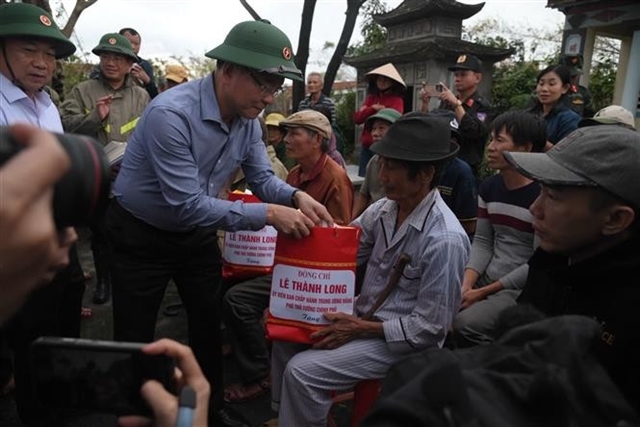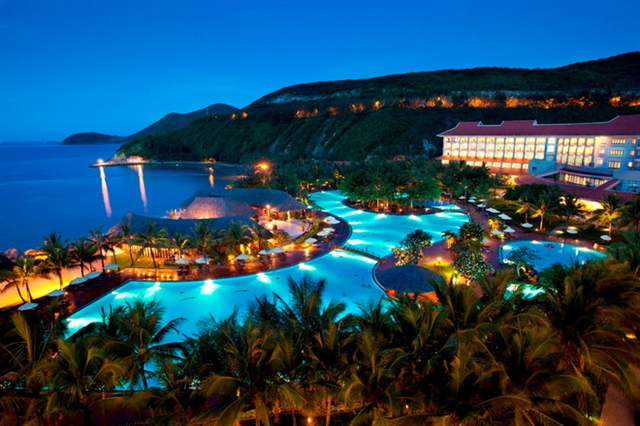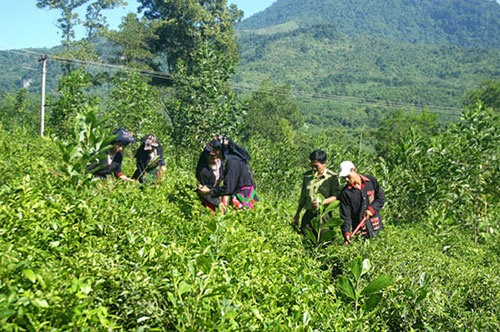 Society
Society

Located 48 km west of the capital city Hà Nội, the serene
 |
| Forest ranger Ba Trại checks plants with Dao locals. — Photo hanoimoi.com.vn |
HÀ NỘI — Located 48km west of the capital city Hà Nội, the serene
Once a forbidden forest, Ba Vì National Park is now open to nature-lovers and travel-addicts to explore. Fifth-grader Trần Lê Sơn Tùng and his friends from
Dr. Nguyễn Phi Truyền, manager of Ba Vì National Park, said that the park, previously named Ba Vì National Forbidden Forest, covered more than 7,000ha by 1991 and has since expanded to nearly 9,705ha with a surrounding area of roughly 40,700ha. Truyền added that the large park boasts a rich diversity of plants and animals.
“Our aim is to preserve the plants and save the animals as they live naturally, protecting them from being captured and exploited,” Truyền told Hà Nội Mới (New Hà Nội) newspaper.
Uncle Hồ taught forest rangers: “Forests are gold when we protect and cultivate them.” Preserving the forest and its biodiversity is the ultimate task for the rangers, Truyền said.
Between the trees, several historical sites and tourist attractions, including Thượng Pagoda and Trung Pagoda, propel the tourism industry.
Living under foliage and in the area surrounding the forest, approximately 115,000 people from diverse ethnic groups of the Kinh, Mường, Dao and Thái, dressed in vibrant-coloured costumes and celebrating their diverse traditions, add significant cultural diversity to the area.
Beyond its beauty and diversity, Ba Vì National Park adds considerable value for the community, said Đỗ Thanh Hùng, deputy manager of Ba Vì National Park. “
Local households were contracted to cultivate native, multi-functional and rare plants in non-forested areas to restore lost ecosystems, according to Hà Nội Mới newspaper. Their tasks included regenerating forests and cultivating gardens to protect endangered species. The results were outstanding: nearly 2,160ha of forest were cultivated, 450ha regenerated and 275ha renovated. Not only did the outcome improve the coverage of the forest, but it also boosted the tourist attractions within the park, namely the 17ha bamboo garden and the 7ha coconut garden home to 70 species.
To increase tourism value, the Ministry of Agriculture and Rural Development allowed the park officials to lease several specialised forest areas to operate tourism services as a pilot project. After four years, the project saw considerable socio-economic benefits: jobs were created for locals in the operating spaces while full-time managers were assigned to protect critical areas. Thanks to the project, market for selling agricultural products was formed, contributing to tourism value. Seeing the success, businesses cultivated more plant species for profits in tourism, creating doubling the benefits. What’s more, the rapid cultural exchanges help conserve cultural values while increasing understanding in science and technology.
Triệu Thị Lan from
Recently, Ba Vì National Park officials collaborated with the Ba Vì Village Women’s Association to build a 1ha garden, planting 150 different species of Vietnamese herbs. They also instructed 20 Dao households about breeding technologies for two species at their home gardens and organised a support programme to cultivate herbs under fruit trees for more than 100 households. Locals consequently earned more income and exploited fewer forest resources.
“Thanks to the relentless effort of officials, forest rangers and locals to preserve Ba Vì National Park, tourism in Ba Vì developed day by day. Locals also enjoy the fresh atmosphere and the diversity it offers,” Nguyễn Đình Dần, vice president of Ba Vì District People’s Committee said. The forest retains its greenery while contributing socio-economic and national defence values to Việt




